Packers 2021 Redraft: Seventh-Round Pick Kylin Hill
GREEN BAY, Wis. – Hindsight is always 20/20, especially when it comes to the NFL Draft. A lot of things go into whether or not a draft pick was worth the investment. Was the scouting department’s projection correct? Was the player a good fit for the scheme? Was he given the proper coaching? How does he handle life as a professional?
With that as a backdrop, let’s revisit the Green Bay Packers’ 2021 draft class in a series of stories. Nine players were selected, concluding with seventh-round running back Kylin Hill with the 256th overall selection.
Before the Draft
The Packers lost Jamaal Williams in free agency. That left the Packers with what seemed like a strong one-two punch of Aaron Jones and AJ Dillon but only unproven Patrick Taylor as returning depth. Taylor was an unknown quantity after missing his rookie season with a foot injury that ruined his final season at Memphis.
Packers Select Kylin Hill in Seventh Round
With 734 yards as a sophomore and 1,350 yards as a junior, Hill looked like a top prospect entering his senior year at Mississippi State. Instead, his 2020 campaign went nowhere fast. In three games in new coach Mike Leach’s Air Raid system, he carried only 15 times for 58 yards but did catch 23 passes. He was suspended by Leach and ultimately opted out, leading to an uncertain draft fate.
During that abbreviated final season, Hill tied the school record with 15 catches vs. Kentucky and broke the school record for most receiving yards by a running back with 158 vs. LSU.
“You saw enough in that one game (against LSU) that he was a guy that can play on third down,” Senior Bowl executive director Jim Nagy said. “He had some really nice pass-pro reps here at the Senior Bowl, so he’s physically stout enough to hold up in pass pro, so that’s another good thing. He adds to the depth of that group. A guy that late in the draft, talent-wise, he shouldn’t have been there. To take a shot right there made a heck of a lot of sense.”
At the Time, I Would Have Picked …
With the need to add depth at a physical position, drafting Hill at this spot – No. 256 was the fourth-to-last-pick in the draft – was a no-brainer. He was a better talent than the running back Detroit took with the next pick, Oregon State’s Jermar Jefferson.
The Verdict
Stuck behind Jones and Dillon, who wound up forming one of the top tandems in the NFL, Hill didn’t get many opportunities. After a strong preseason that included a 22-yard touchdown catch and a 12-yard touchdown run, Hill averaged 2.4 yards on 10 rushes and caught one pass for 5 yards on offense, and averaged 19.9 yards with a long of 41 on kickoff returns. He suffered a torn ACL returning a kickoff at Arizona on Oct. 28.
Jefferson averaged 4.9 yards on 15 carries but was inactive most of the season. There were no surprise standouts among the undrafted rookie runners. So, general manager Brian Gutekunst took the best available running back.
There were two receivers who I liked that went undrafted. One was South Dakota State’s Cade Johnson, an intriguing slot and return threat, but the Packers took care of that with Amari Rodgers in the third round. Illinois’ Josh Imatorbhebhe measured 6-foot-1 and posted an eye-popping 46.5-inch vertical leap. Neither of those players got on the field as rookies.
The one undrafted rookie who might have helped was defensive tackle Naquan Jones. Listed at 340 pounds at Michigan State, he tipped the scales at 313 before the draft. In four collegiate seasons, he started five games and had three sacks. As a rookie with the Tennessee Titans, he started five games and had 2.5 sacks. That was an infinitely bigger impact than the Packers’ top undrafted defensive lineman, Jack Heflin.
Grading the Running Backs
Aaron Jones ($4.46 million cap charge; ranking No. 13 among RBs)
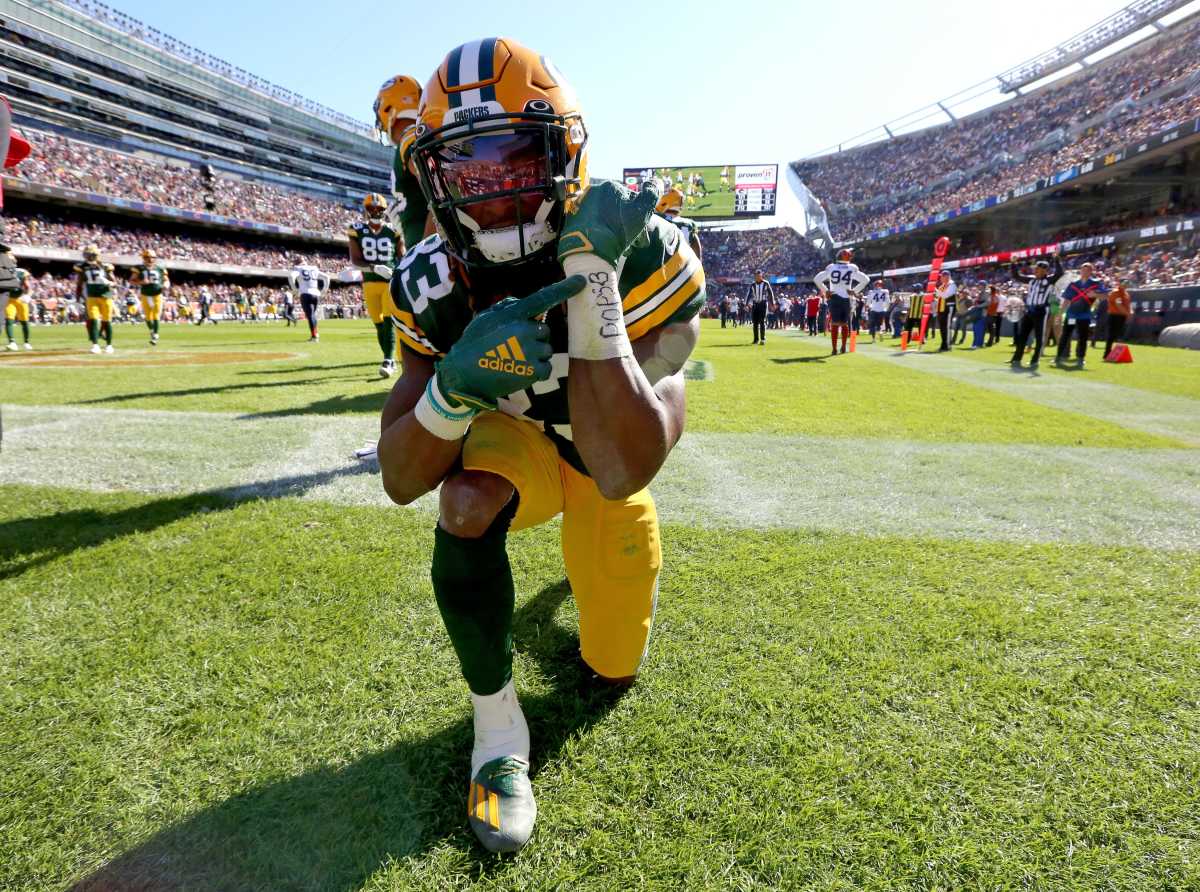
In a big surprise just before the start of free agency, the Packers re-signed Jones with a four-year deal worth $48 million.
With talent and production, leadership and charisma, it was easy to see why.
At the time his re-signed, his career average of 5.17 yards per carry ranked sixth all-time. Two of the players ahead of him, Cleveland’s Marion Motley and Jim Brown, are in the Pro Football Hall of Fame. Jones and Brown were the only players in NFL history to rush for 3,000-plus yards, 35-plus touchdowns and average 5-plus yards per carry in their first four seasons in the league.
Jones was good in 2021 but nowhere near that good. In 15 games, he rushed for 799 yards (4.7 average) and four touchdowns. A tremendous receiving threat, he added 52 receptions for 391 yards (7.5 average) and six touchdowns. That gave him 1,190 yards and 10 touchdowns from scrimmage. However, he went from 5.5 yards per rush and 5.9 yards per touch in 2020 to 4.7 yards per rush and 5.3 yards per touch in 2021. His 10-yard run rate went from 12.7 percent in 2020 to 9.3 percent in 2021.
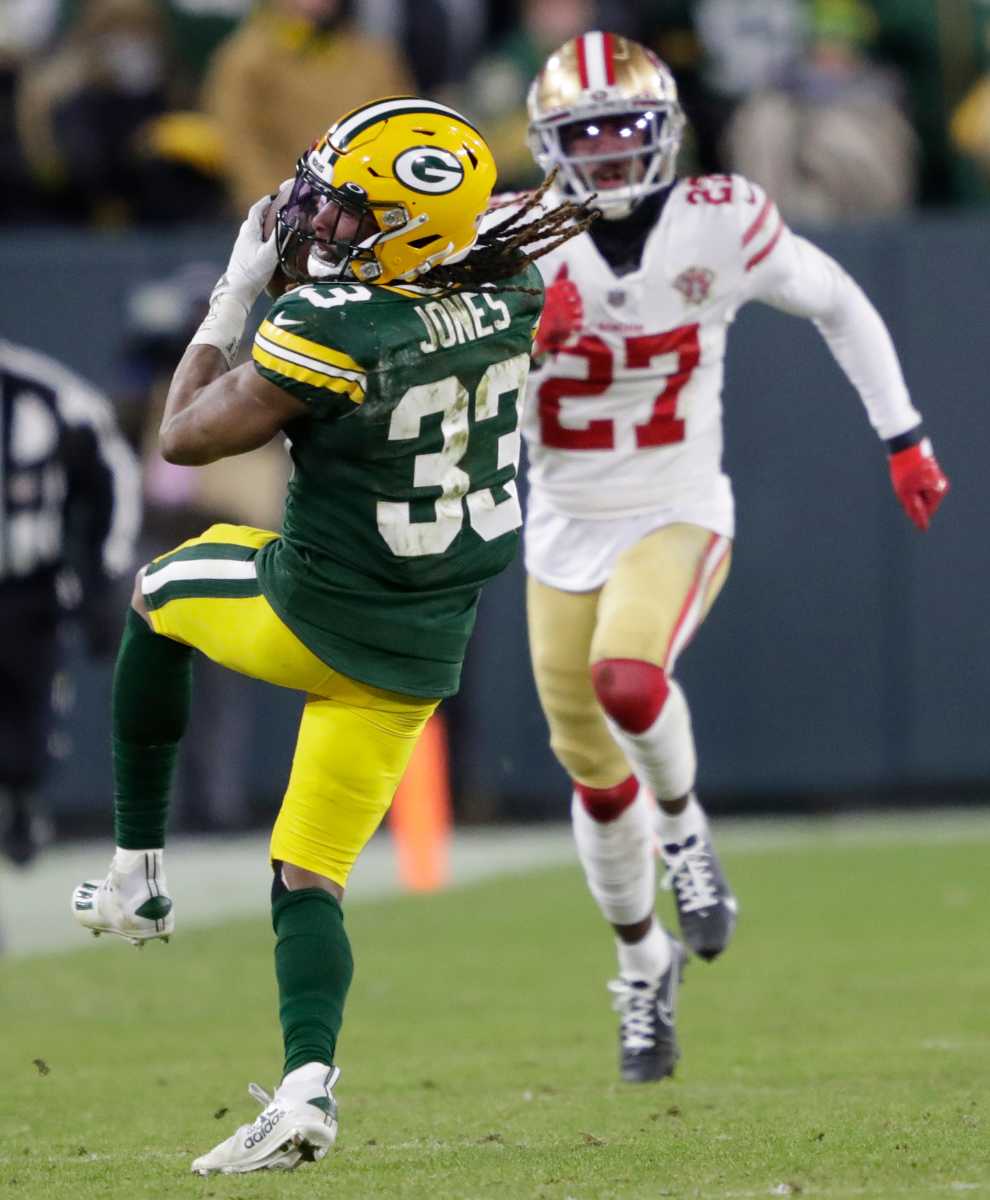
To be sure, the revolving door on the offensive line impacted his numbers. In 2020, he ran behind All-Pros David Bakhtiari and Corey Linsley and Pro Bowler Elgton Jenkins. In 2021, Jenkins played in eight games, Bakhtiari in one and Linsley was with the Chargers. Of 50 backs with at least 100 rushes, Jones tied for 13th with 3.18 yards per rush after contact, according to Pro Football Focus. He’s never shied away from contact. However, he ranked just 32nd in Success Rate, according to Football Outsiders. (More on that stat in a moment.)
The problem with paying running backs is, at some point, the accumulation of hits is just too much. Jones isn’t to that point but he might be best as 1B to AJ Dillon’s 1A.
Grade: C-plus.
AJ Dillon ($1.20 million cap charge; ranking No. 51 among RBs)
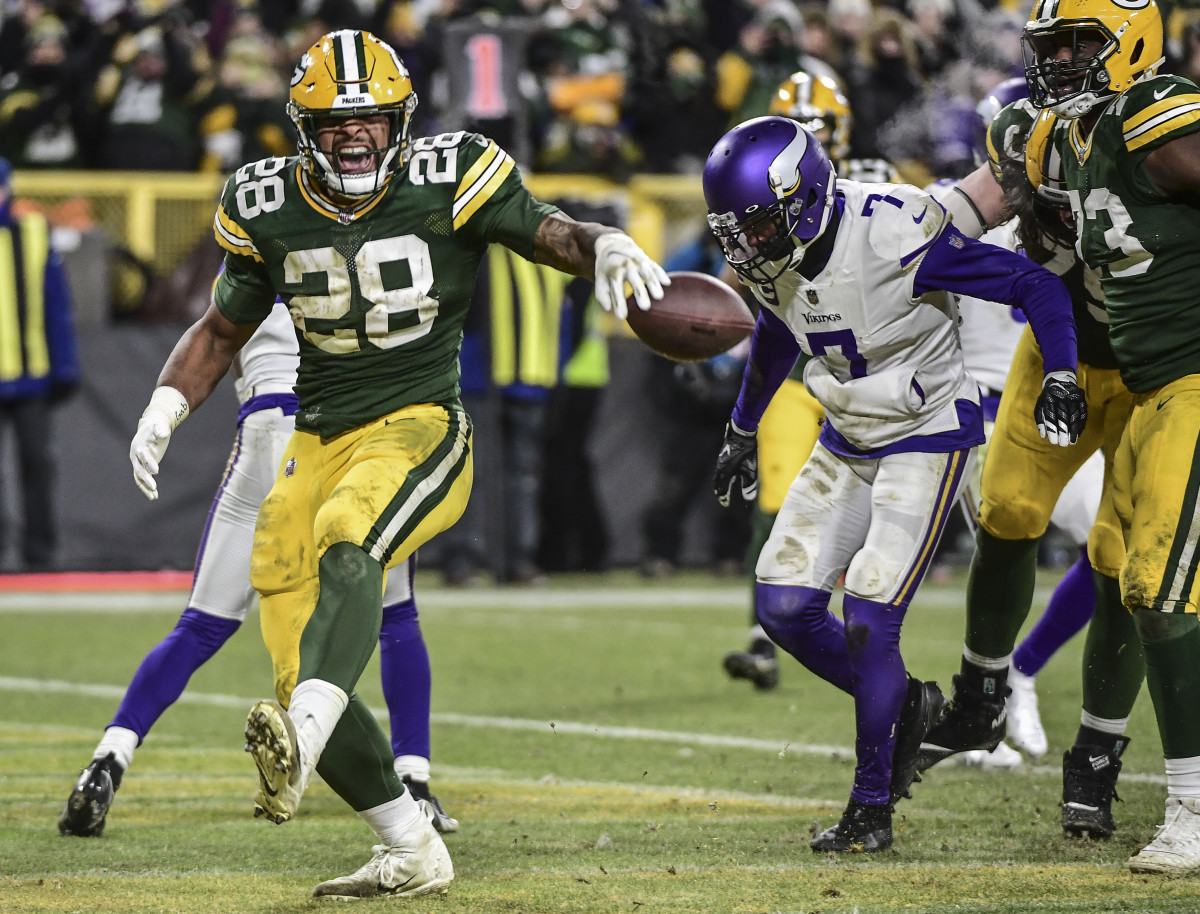
On the surface, there was nothing particularly great about Dillon’s second season. He led the team with 803 rushing yards but averaged a modest 4.3 yards per carry. However, Football Outsiders has a stat called Success Rate. It mirrors the Packers’ win/loss system. A first-and-10 run that gains 4 yards is a win; anything less is a loss. A second-down run that gains at least half the required distance is a win. A third-down run that moves the chains is a win.
According to Football Outsiders, Dillon ranked No. 1 with a 63 percent success rate.
Dillon got what was blocked and typically used his muscular legs to get significantly more. He ranked 20th in the NFL in rushing but 16th in rushing yards after contact. He tied Jones for 13th in the league with 3.18 yards after contact per carry. A total nonfactor in the passing game at Boston College, Dillon has backed up the scouts’ beliefs. According to PFF, 44 backs were targeted at least 35 times. Dillon ranked third in catch rate (91.9 percent) and eighth in YAC per catch (9.2) while catching 34 balls for 313 yards and two scores.
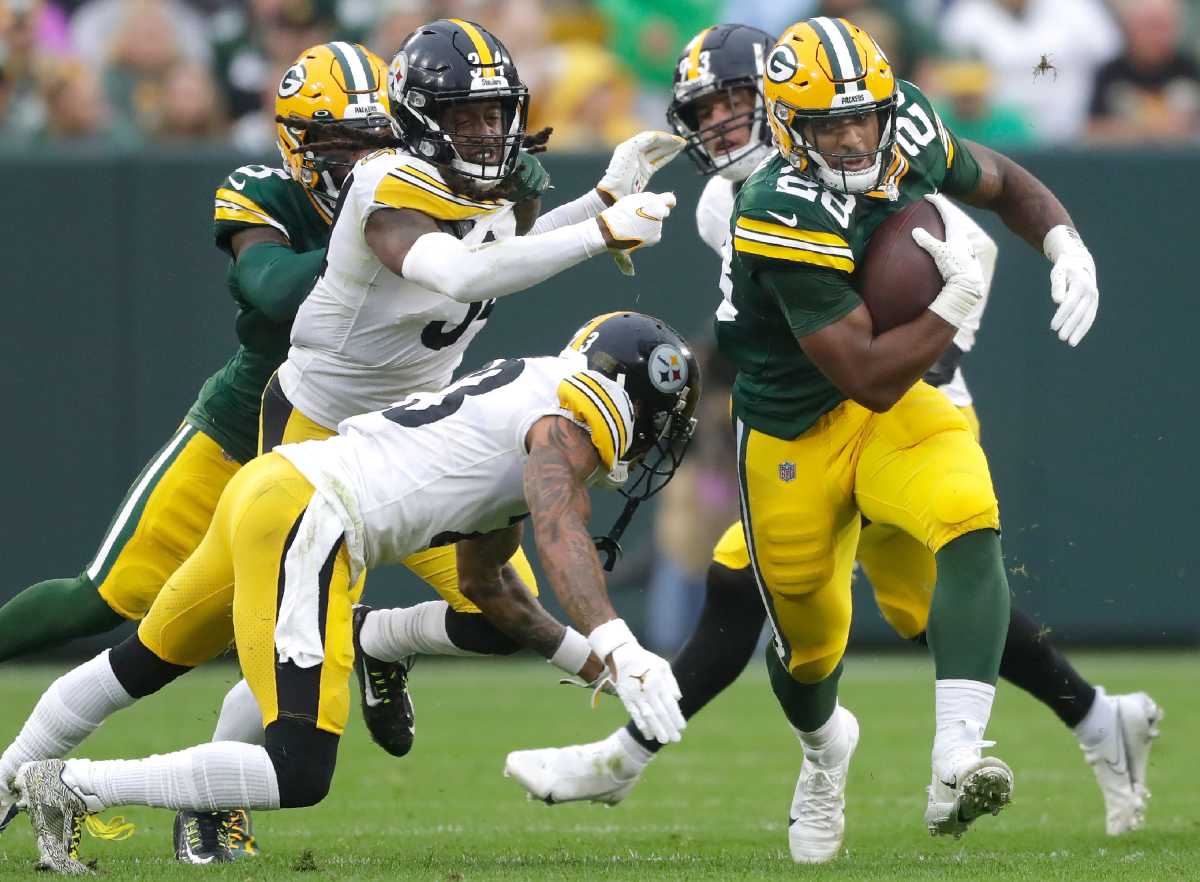
Where Dillon needs to take a big step is in explosive runs. He had nine runs of 10-plus yards, a 10-yard run rate of 4.8 percent that ranked last out of the 50 backs with 100-plus attempts. He wasn’t given a path into the open field very often. When he did, he never got close to getting past that last line of defense.
Grade: B.
Kylin Hill ($543,655 cap charge; ranking No. 121 among RBs)
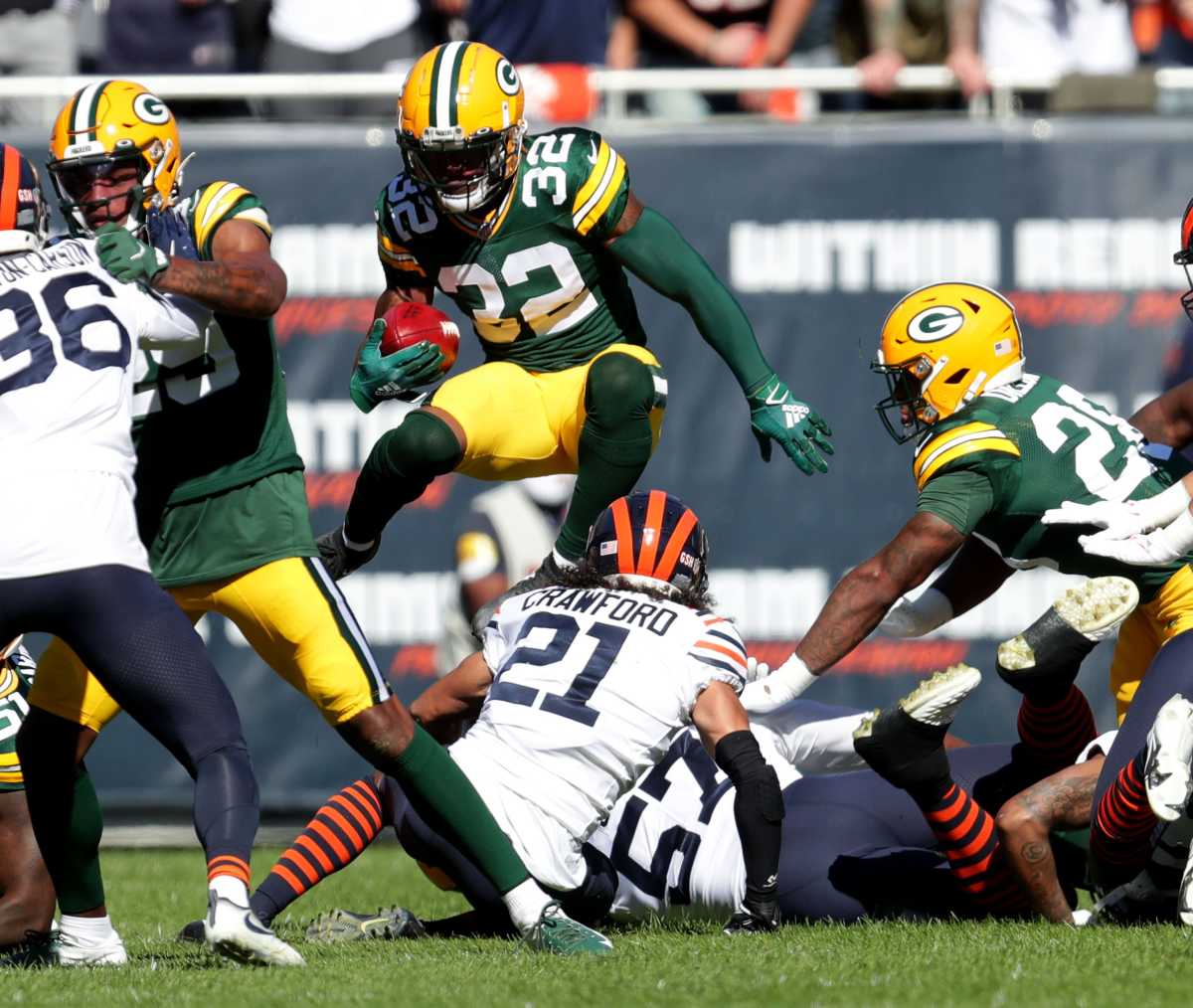
A potential-packed seventh-round pick, Hill never had a prayer of earning a major role alongside Jones and Dillon. He carried 10 times for 24 yards (2.4 average; long of 8) and caught one pass for 5 yards. He didn’t break any tackles and averaged 1.9 yards after contact. Given a shot on kickoff returns, he averaged only 19.9 yards per return but had the team’s longest of the season (41 yards). He suffered a torn ACL returning a kickoff in Week 8 at Arizona.
Grade: D.
Patrick Taylor ($366,667 cap charge; ranking No. 133 among RBs)
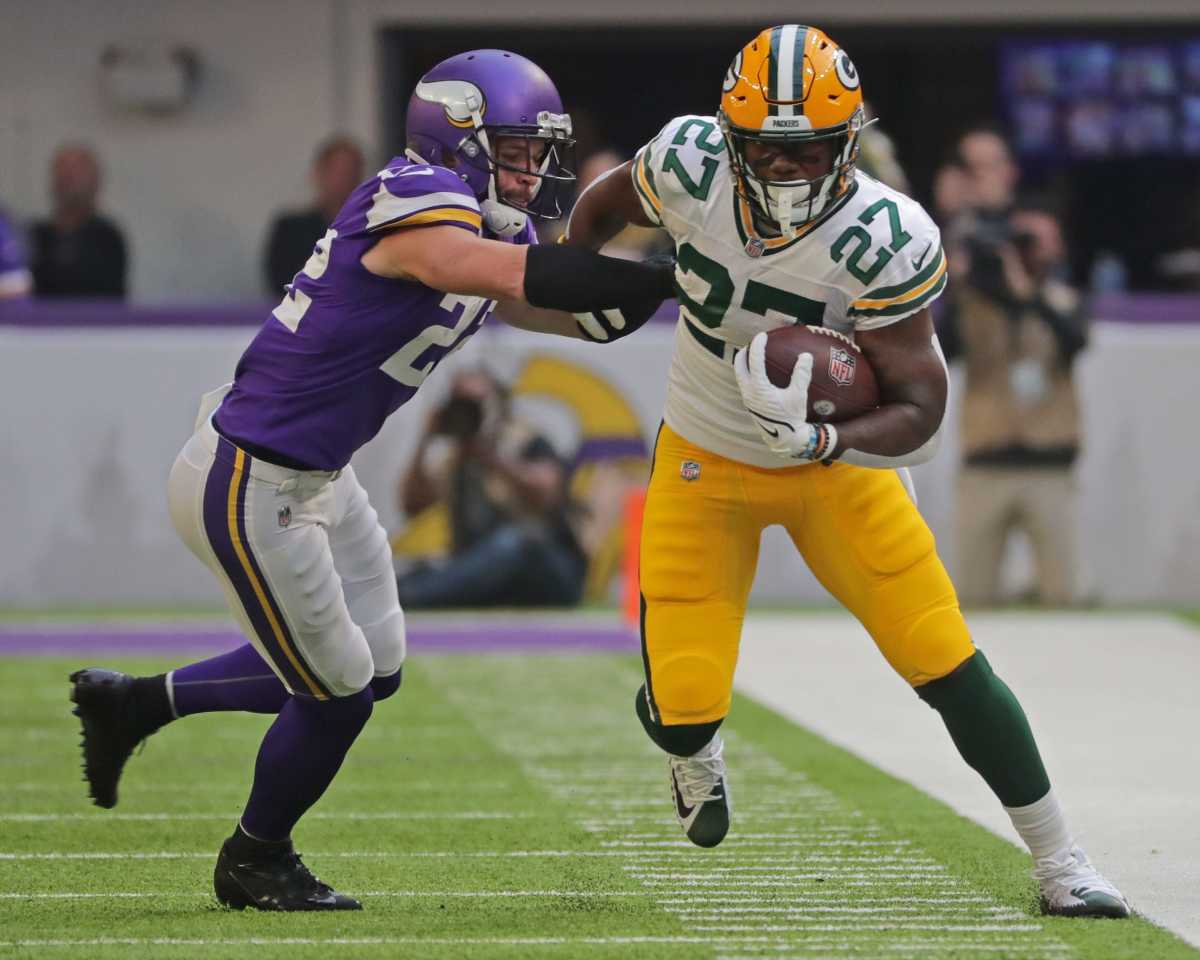
Beaten out by Hill for the No. 3 job during training camp, Taylor got his chance when Hill went down at midseason. He was much better on Sundays than on the practice field. He carried 23 times for 89 yards (3.9 average) and one touchdown and caught two passes for 3 yards. In those limited snaps, he forced six missed tackles, averaged 3.04 yards after contact and had two carries of 10-plus yards.
With Jones inactive and Dillon getting limited reps in the finale at Detroit, Taylor really flashed. He carried 11 times for 53 yards and one touchdown, with 40 of those yards coming after contact. That game has him positioned for a roster spot next summer.
Grade: C.
More Packers Redraft
Sixth-round LB Isaiah McDuffie
